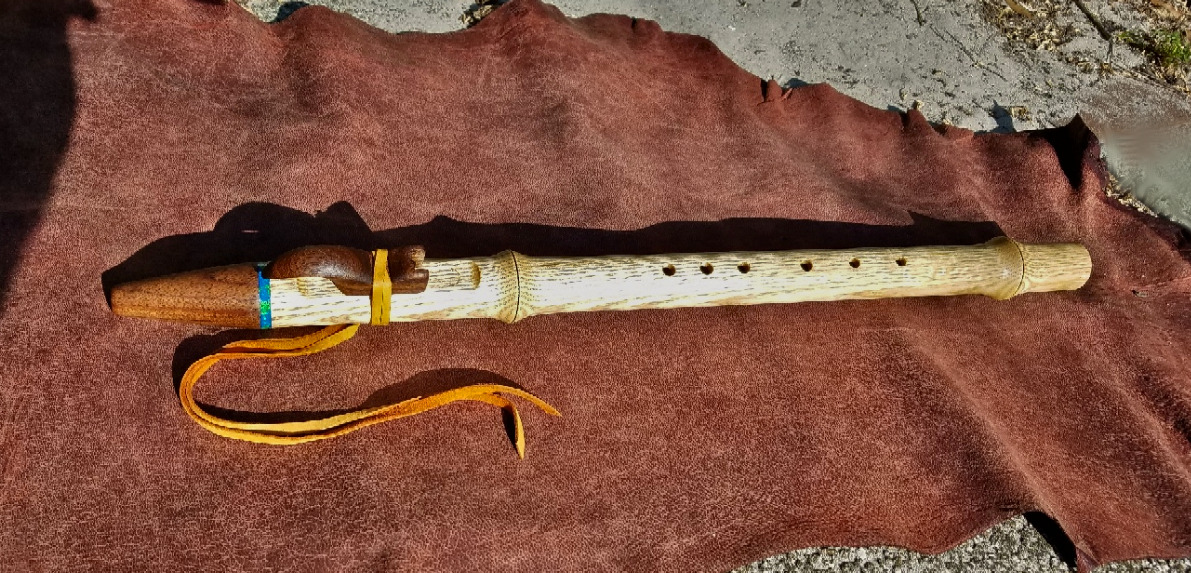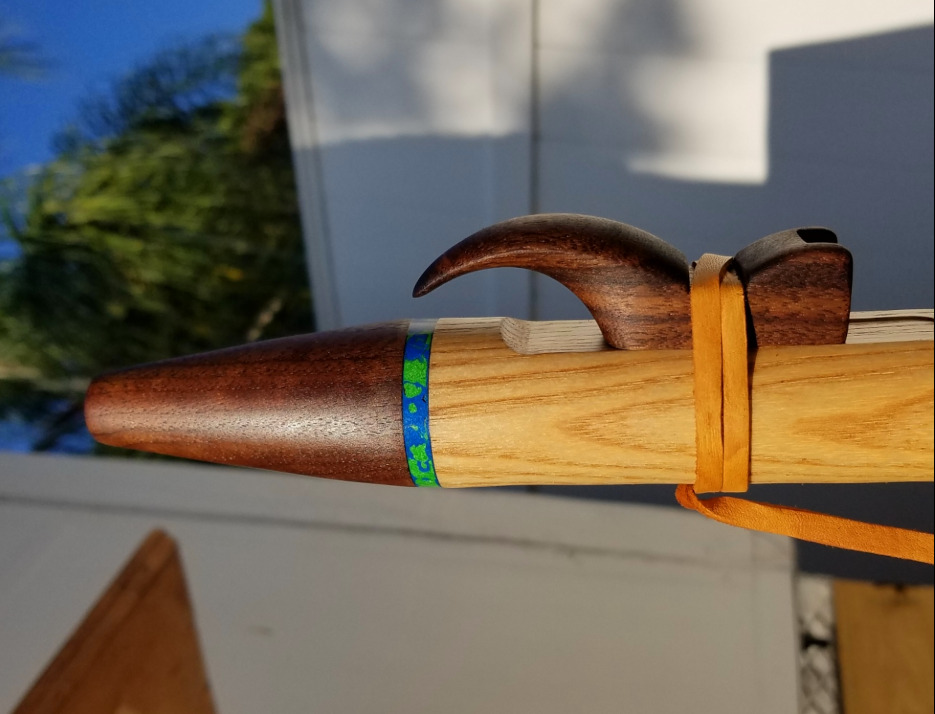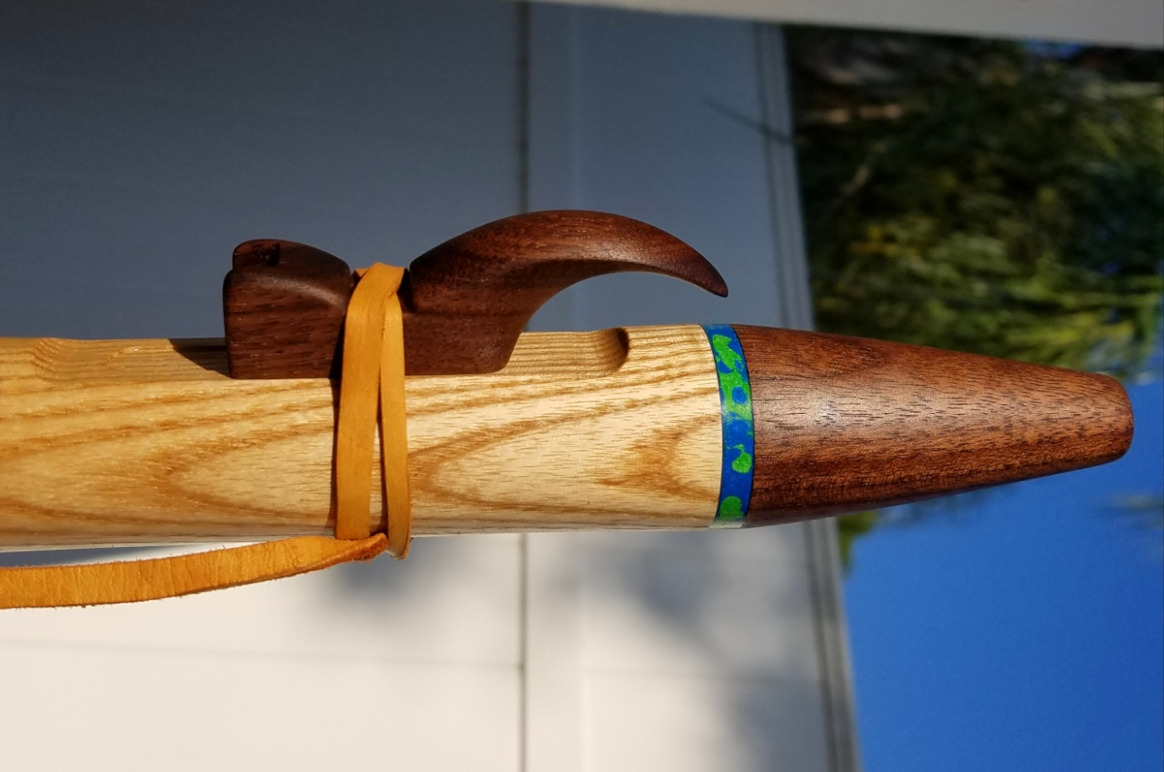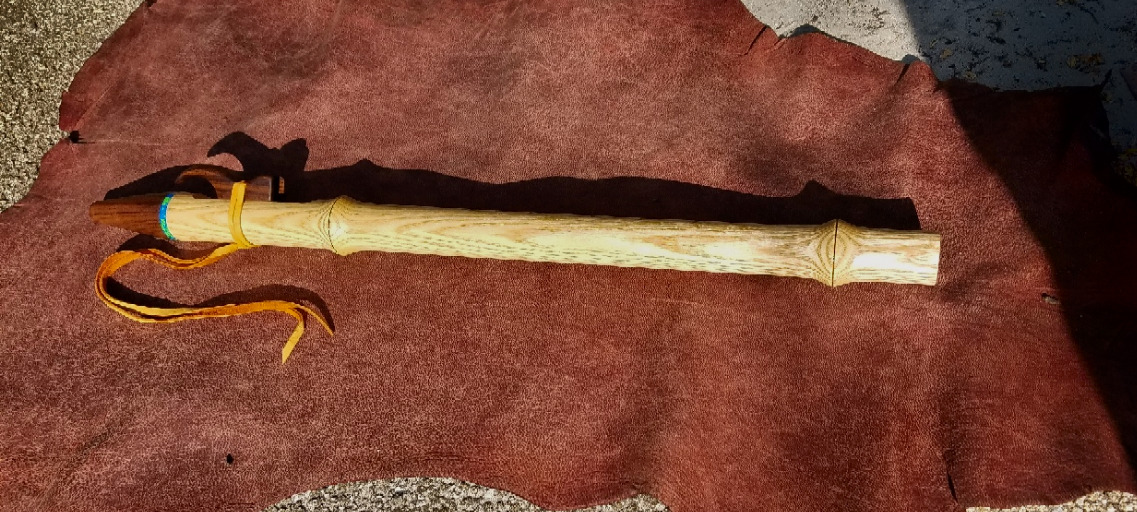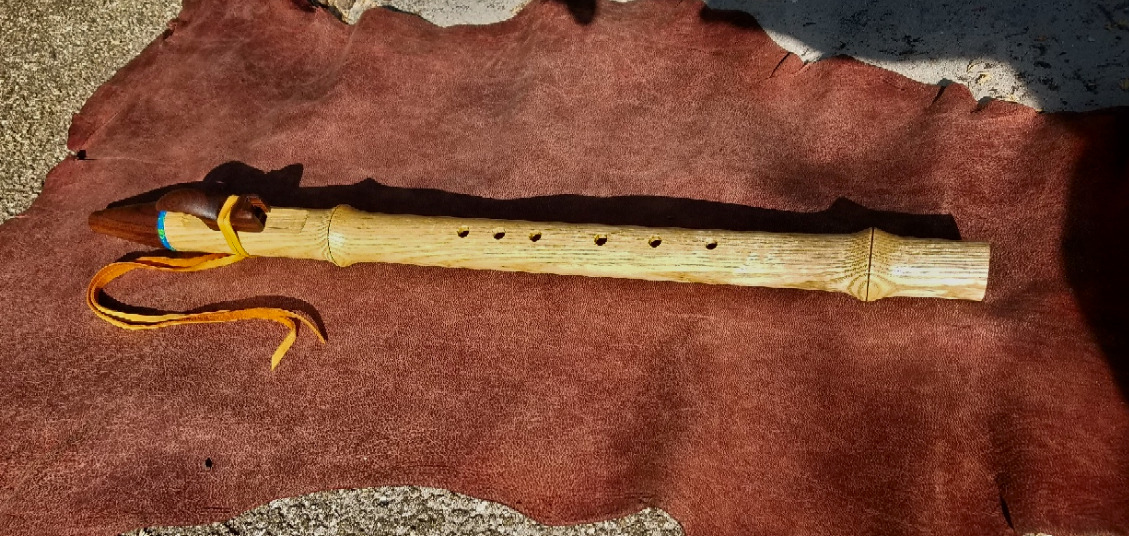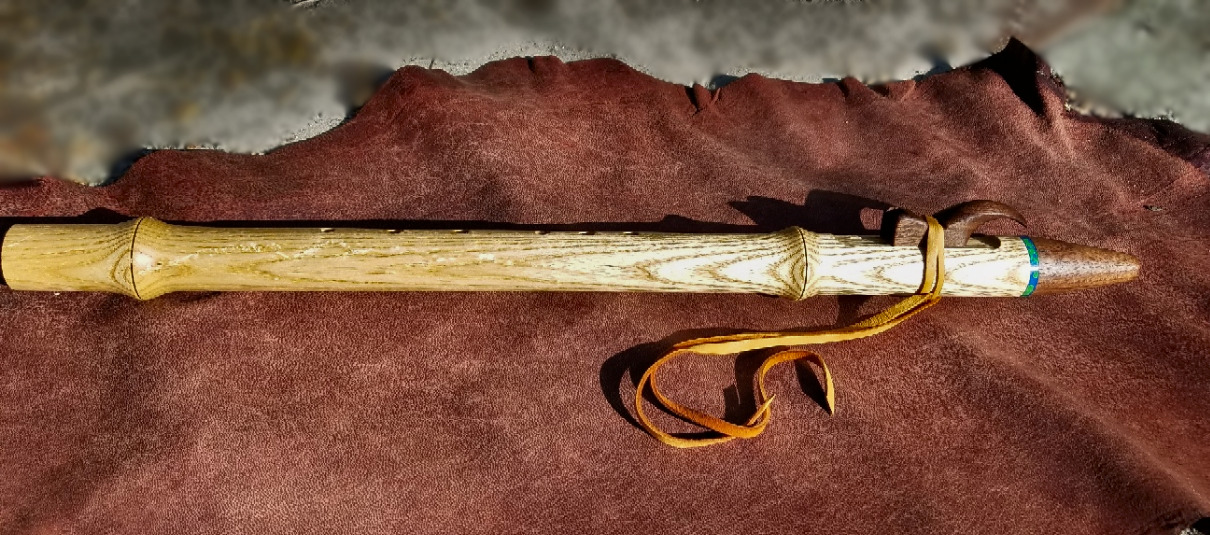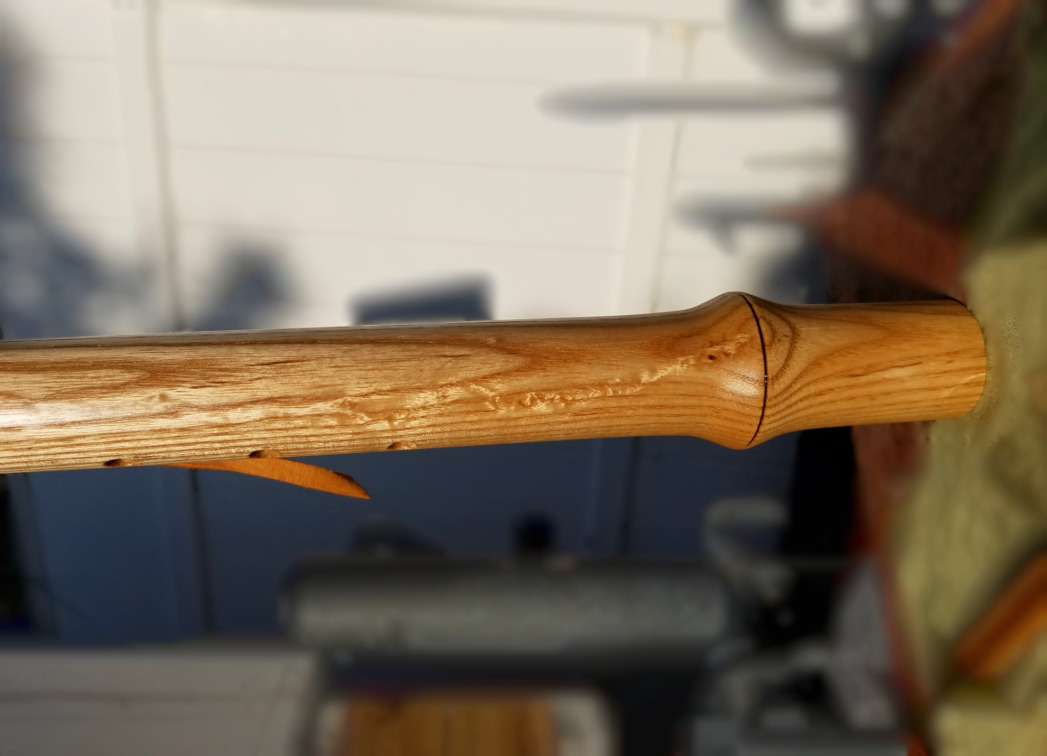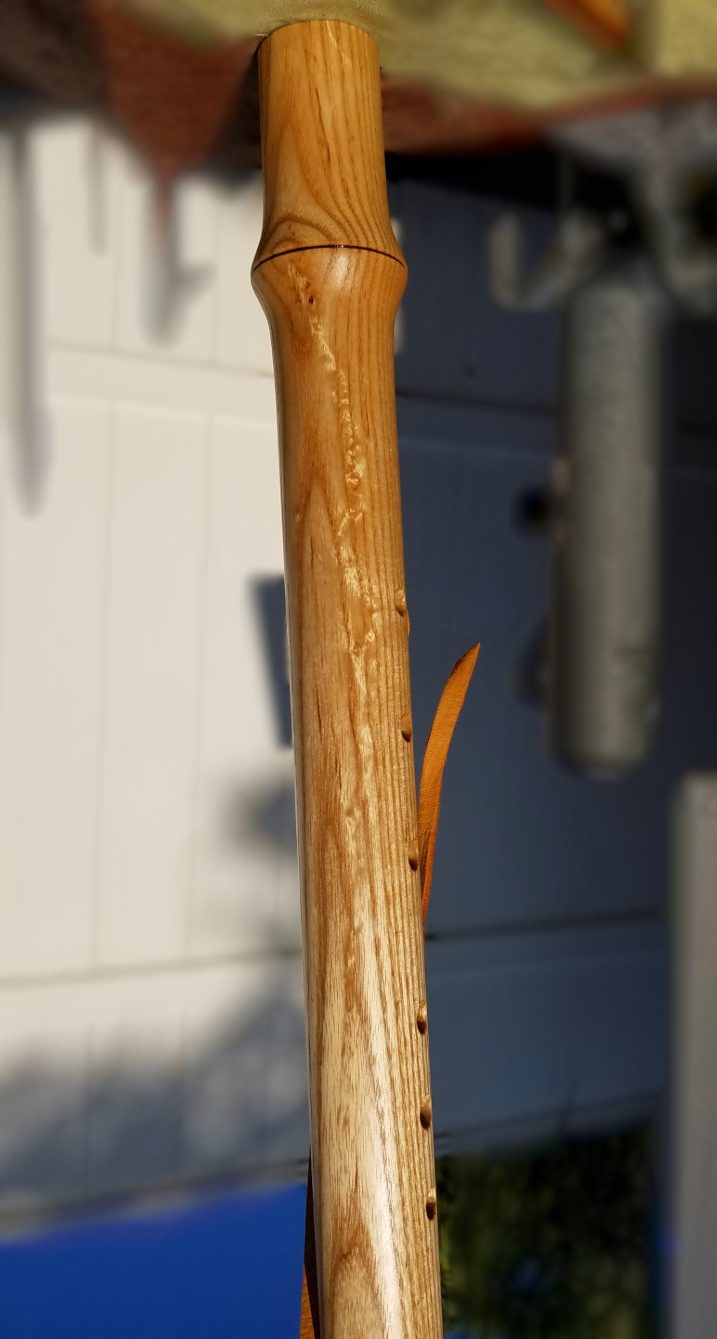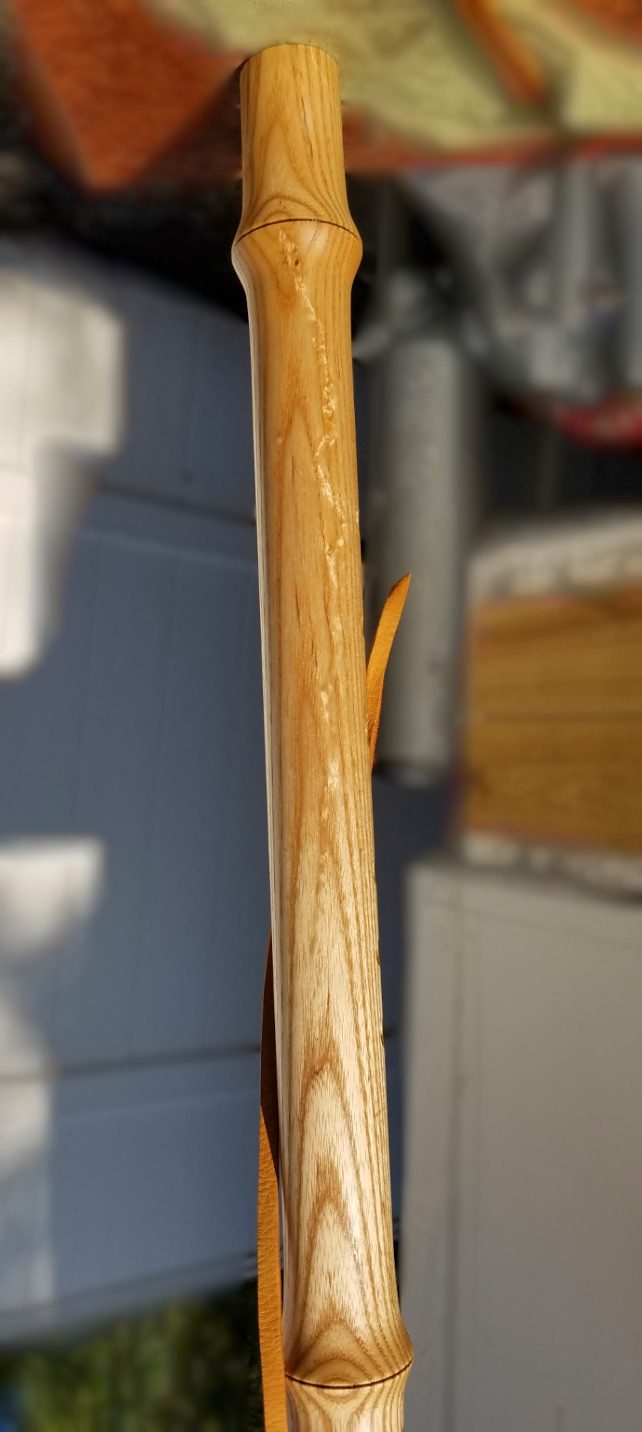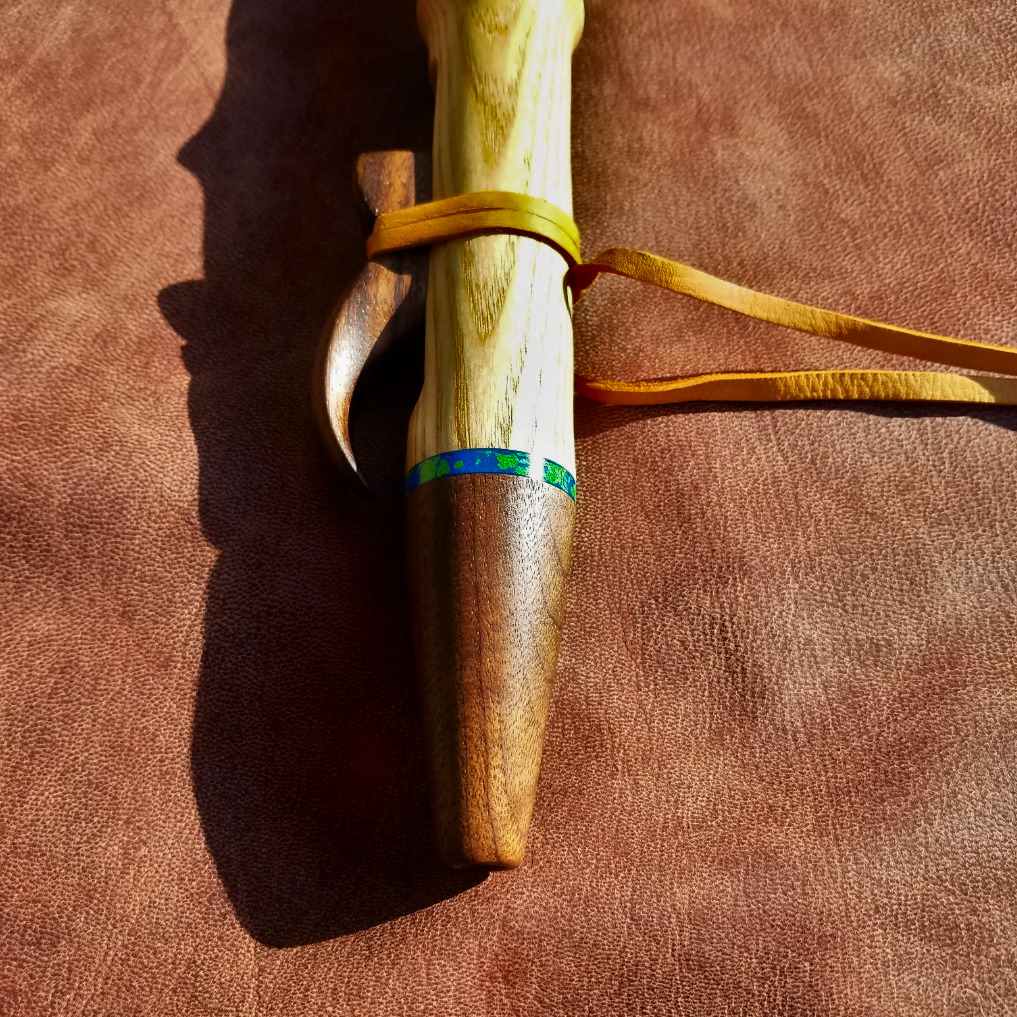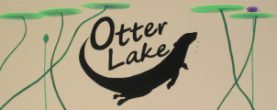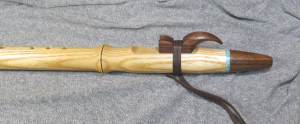The hardwood body of this flute is bored straight through, with a 7/8″ gun drill on a very long lathe. It’s one piece with uninterrupted wood grain, not split, in this case.
Here is a demo of this exact unit, as in only one for sale:
Unique Feature! — You can see, in the woodgrain closeups, something that looks like a little river or path of a teardrop. This smooth, solid character feature is wood the tree filled a beetle tunnel with when it healed 100%. It catches in the light, sometimes, with a hint of depth and character, the old digs of a little creature.
Photos do not do hard-oiled ash justice. In person it seems less pine-looking, has weight, and is quite hard.
People say all the time, “There are a lot of pretty flutes, but few that play how I like”, and that’s putting it mildly.
My flutes have garnered wonderful feedback so far, with other makers and serious musicians all encouraging me with good reports on my flutes’ tuning, performance, and playability, for years, now.
Love warblers or hate them, fine either way — this one warbles (!) but only in a very deliberate window of marked, extra breath (no accidental warbling, whatsoever). Win-win.
Shipping will only add $10 (essentially splitting the cost with me) — it comes in the most premium, crush-proof pasteboard shipping tube with removable caps, that can be kept for transport and flute safekeeping.
The faux cane nodes are my homage to possible cane inspirations of such flutes that were, later, recreated in wood, where cane was unavailable. The accent ring is blue and green mica stabilized in acrylic, and is a quite phenolic-like, deep inlay. The 3-stage “drying oil” finish is permanent and permeated into the wood (not lying on top on the wood or extra glossy). Looks and feels natural but preserves and beautifies.
